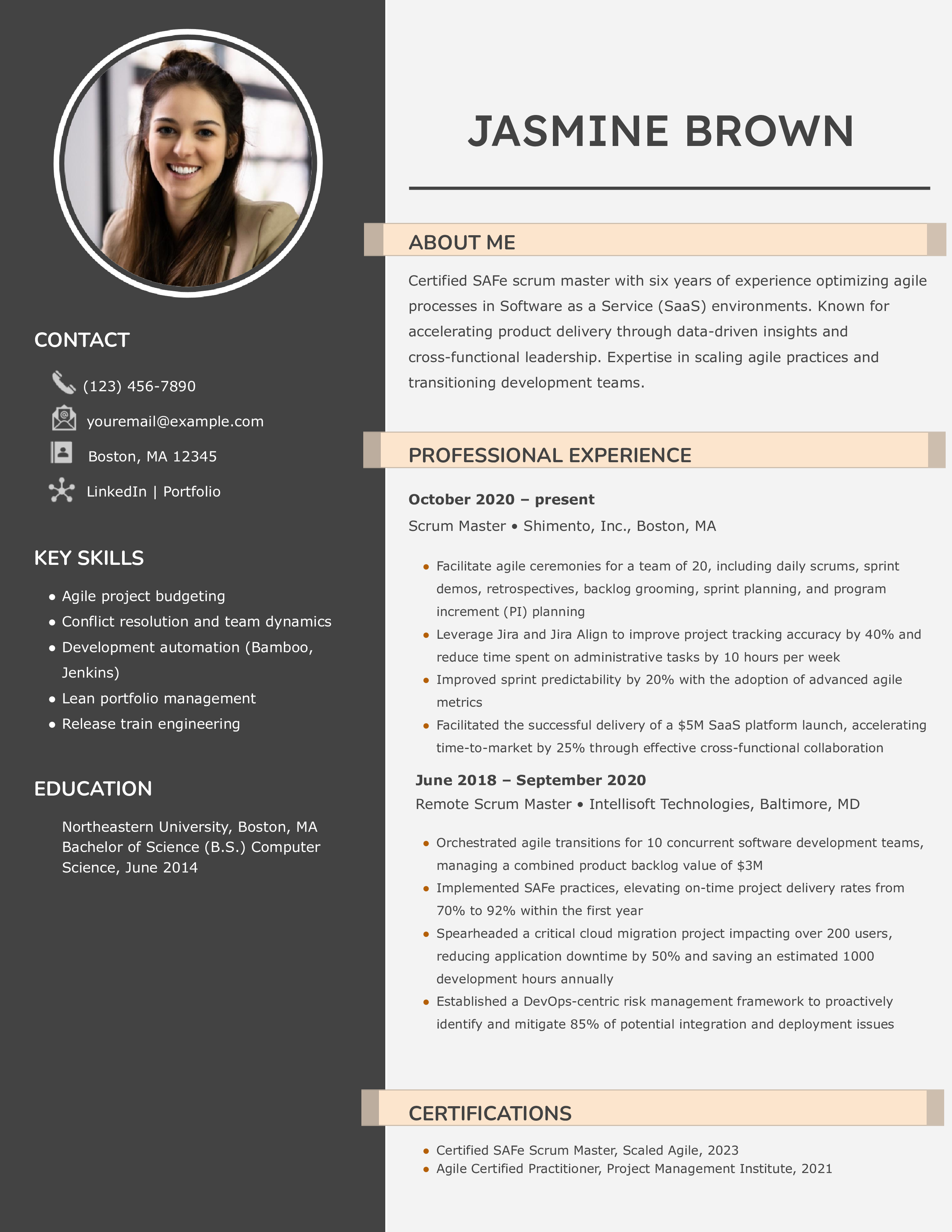Adding your picture can help personalize your resume and job application. But it’s often unnecessary and, in some cases, will make your resume less effective. To know whether you should include a picture, you’ll need to consider your career goals and read each job posting closely.
The guide below will cover when to use a photo on your resume, and how to take one that conveys your professionalism.
Clarify Your Search Goals
If you haven’t already, write down your thoughts on the type of job that interests you. The more you clarify your target role, the easier you will know whether your resume should have a photo. As we’ll cover below, the top factors affecting this decision are your target:
- Job title and duties
- Industry or sector
- Geographic region
Focus on Your Work Credentials
For most job applications in the U.S., you don’t need your resume to include a picture. That’s because an effective resume focuses almost exclusively on your skills and qualifications for your target job. Adding a photo can distract from those qualifications and reveal various things about you (like race, gender, or appearance) that are irrelevant to whether you’ll excel in the role. The image occupies valuable space at the top of your resume, limiting the detail you can give your summary paragraph or other introductory sections. It may also hinder your document’s performance on applicant tracking systems (ATS), which often struggle to scan resumes with complex layouts and large file sizes.
A picture can also complicate and undermine this hiring stage by exposing you to the recipient’s biases or preconceptions. It may even take you out of the running if the company has chosen only to review photo-less applications to avoid discrimination in its hiring process. Granted, they’ll probably learn what you look like via LinkedIn or the interview. But your resume is your first impression. Make that impression solely about your work strengths and potential, and you’ll have the best chance of being judged fairly and favorably.
Exceptions for Certain Job Markets
The main exception to the no-photo rule is if you’re applying to a job where personal appearance matters to some degree, such as actor, model, or TV news correspondent. But the resume photo may still be unnecessary if you send a proper headshot to a talent agency as part of your application. Always refer to the job posting for specific instructions. This exception can also apply to real estate, outside sales, or public relations positions, where much of your time is spent engaging with clients or stakeholders in person.
Another common exception is if you’re applying to jobs overseas. In some labor markets outside the U.S., employers expect you to include a picture on your resume or curriculum vitae (CV). Again, look for instructions in each job posting. Following are examples of places where it’s common to send a photo:
- Brazil
- China
- France
- Germany
- Japan
- Philippines
- The Middle East
Where Do I Place And Position My Picture On My Resume?
At or near the top, next to your name and contact information, as in these two examples:


Frequently Asked Questions: Using a Picture in Your Job Search
No. Although a federal resume often is more detailed than a private-sector resume, the U.S. government names photos as one thing to leave out.
A downside to not adding a picture is it makes your resume less personalized. But you can still adjust your resume to express your personality and style in two main ways:
- Modify the format - Although your resume's design should be fairly simple and conservative, you can still make key visual choices. Specifically, try different font styles until you find one that reflects your work personality or aesthetic.
- Cite your personal interests - Consider adding a "Hobbies and Interests" section if your time outside work complements your qualifications. For instance, your artistic pursuits may speak to a job in graphic design. You might also use this section to express your soft skills - for example, you could cite running a marathon to show determination. Your interests section should always be secondary to work experience but can boost your resume by serving as a conversation starter in the interview.
Yes, in keeping with the more personal tone of that networking site. The photo is a prominent part of LinkedIn's interface, so a profile without one looks incomplete.
Any photo you use on your resume or LinkedIn should be:
- Clear - Use a high-resolution image (preferably 300 DPI or higher), and adjust the brightness and contrast filters as needed. Position yourself facing the sun or a strong light source to prevent backlighting.
- Professional - Wear formal or business-casual attire.
- Simple - Stand in front of a plain or off-white background.
- Straightforward - Face the camera rather than appearing in profile. If necessary, crop your image to center on your head and shoulders.
It's up to you, but color is increasingly common. If you use a color image, preview it in grayscale to confirm that it'll still be clear enough if hiring managers print your resume in black and white.
Resume Templates offers free, HR approved resume templates to help you create a professional resume in minutes. Choose from several template options and even pre-populate a resume from your profile.

